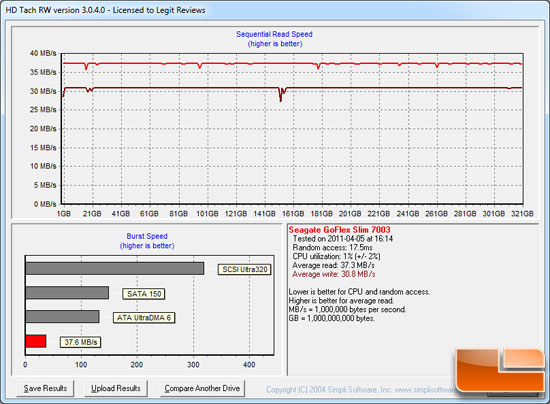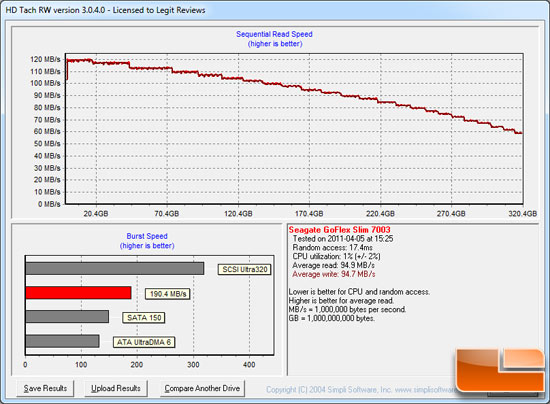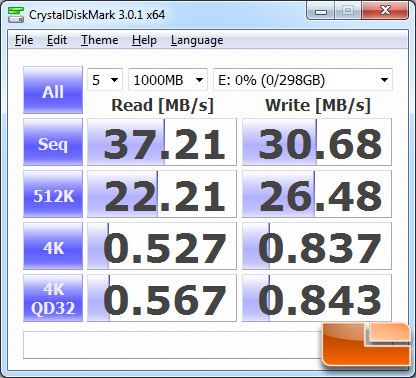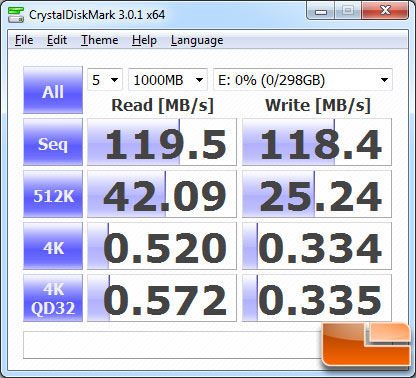Seagate GoFlex Slim 320GB USB 3.0 Hard Drive Review
HDTach v3.0.4 & CrystalDiskMark v3.0.1
HD Tach is a low level hardware benchmark for random access
read/write storage devices such as hard drives, removable drives
(ZIP/JAZZ), flash devices, and RAID arrays. HD Tach uses custom device
drivers and other low level Windows interfaces to bypass as many layers
of software as possible and get as close to the physical performance of
the device as possible.
USB 2.0 Header:

USB 3.0
Header:

Benchmark Results: The Seagate FreeAgent GoFlex Slim 320GB Portable Drive averaged ~37MB/s read and ~31MB/s write on a USB 2.0 header and ~95MB/s read and write on the SuperSpeed USB 3.0 header. The burst speed on the USB 3.0 header was 190.4MB/s and 37.6MB/s with the USB 2.0 header. The random access time was ~17.5ms and didn’t improve significantly between the two USB interfaces we tested the GoFlex Slim on.
CrystalDiskMark is a small HDD benchmark utility for your hard drive
that enables you to rapidly measure sequential and random read/write
speeds.
1000MB Files Test on USB 2.0 Header:

1000MB Files Test on USB 3.0 Header:

Benchmark Results: Another popular testing application that is free is CrystalDiskMark v3.0.1. We ran CDM with a file size of 1000MB on both the USB 2.0
& 3.0 headers to see how performance was on the Seagate FreeAgent GoFlex Slim 320GB external hard drive. As you can see, the sequential read performance went from ~37MB/s to ~120MB/s and the sequential write performance also improved from ~31MB/s to ~118MB/s. As you can also see, the Seagate FreeAgent GoFlex Slim has respectable data transfer speeds on a USB 2.0 port, but if you use it on a system with a USB 3.0 you can have huge performance improvements! We’ll be testing the GoFlex Slim on the SuperSpeed USB 3.0 header for the rest of the tests as that is where this drive is going to shine.

Comments are closed.